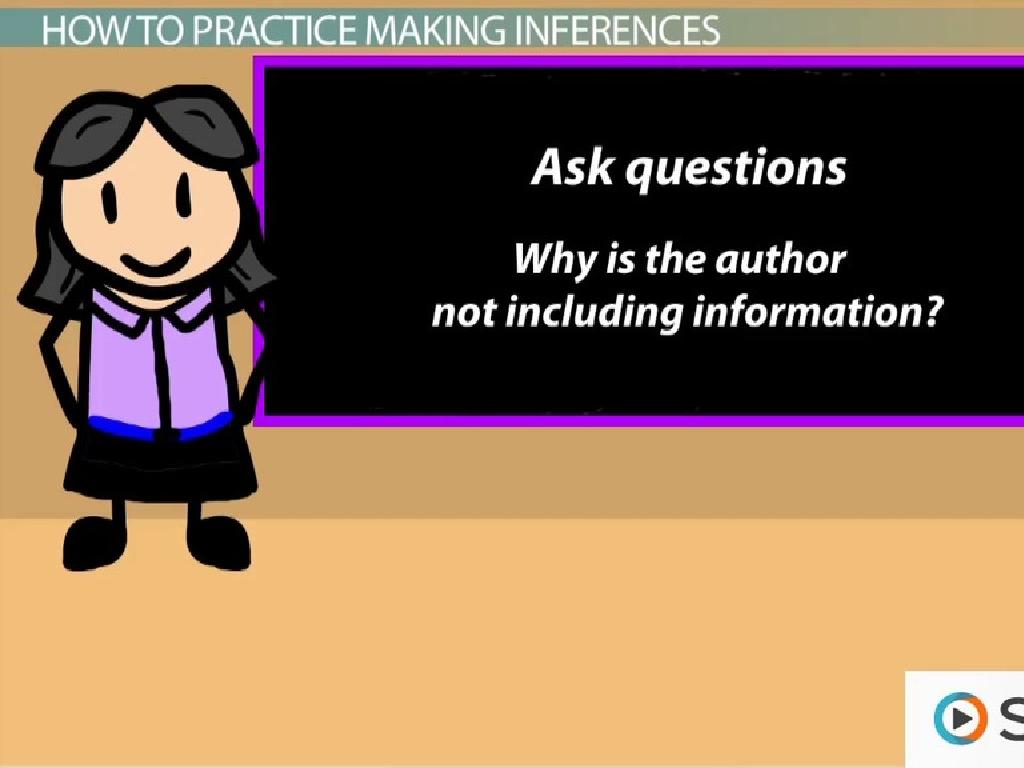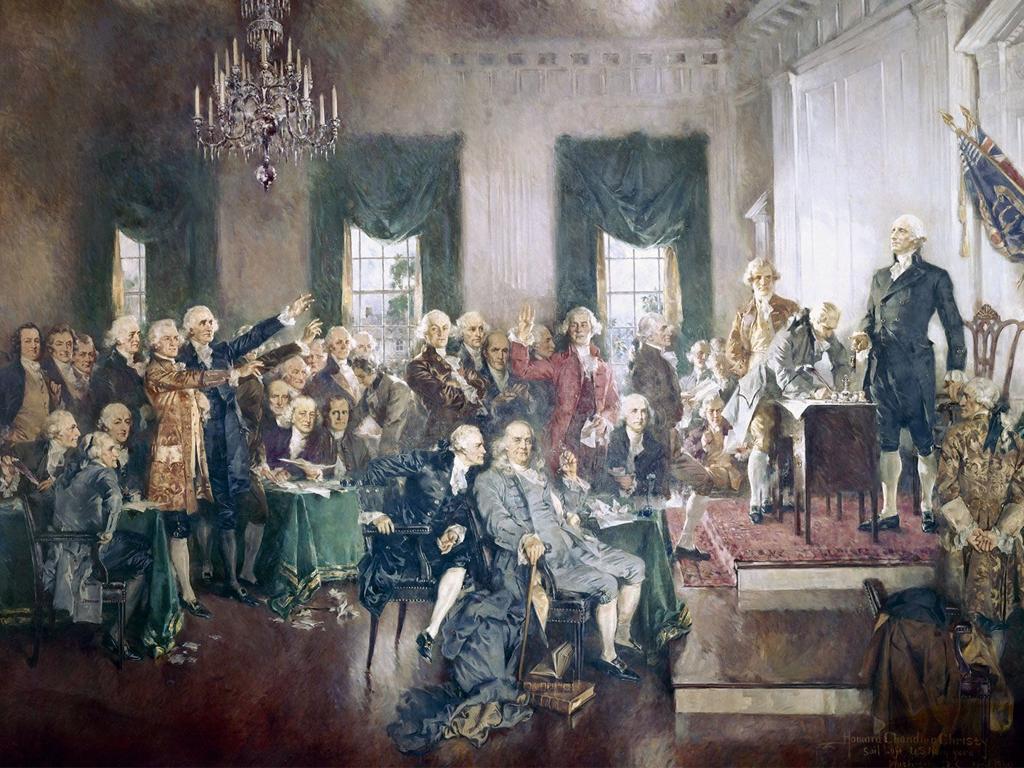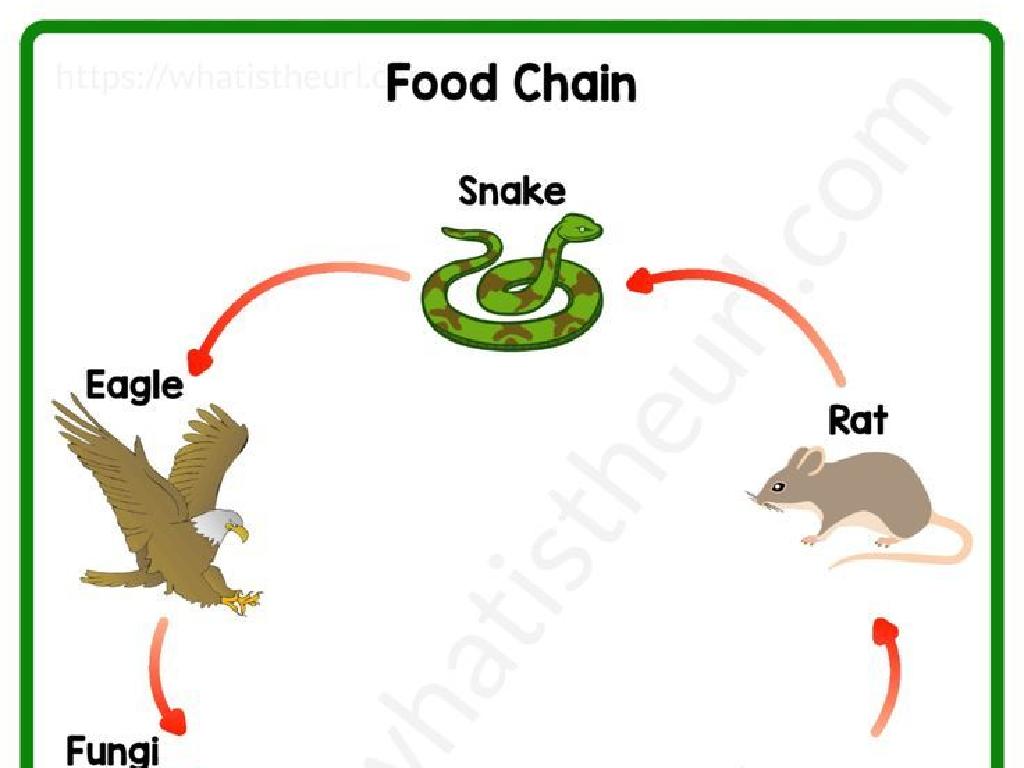Opportunity Cost
Subject: Social studies
Grade: Sixth grade
Topic: Basic Economic Principles
Please LOG IN to download the presentation. Access is available to registered users only.
View More Content
Understanding Opportunity Cost
– Exploring economic choices
– Defining opportunity cost
– The next best alternative given up when making a choice
– Daily life decision-making
– Every choice involves trade-offs
– Opportunity cost in everyday choices
– Choosing between saving or spending allowance
|
This slide introduces the concept of opportunity cost, a fundamental principle in economics that affects our daily decisions. Begin by discussing how choices are a constant part of life, from simple decisions like what to eat for breakfast to more complex ones like how to spend time after school. Define opportunity cost as the value of the next best alternative that we give up when we make a choice. Emphasize that every decision has a trade-off, and opportunity cost helps us understand what we’re sacrificing. Use relatable examples for sixth graders, such as choosing between saving their allowance for a big purchase or spending it on small treats. The goal is to make students aware that their choices have both immediate and long-term consequences.
Understanding Opportunity Cost
– Define Opportunity Cost
– The next best alternative given up when making a choice.
– Every choice incurs a cost
– Choosing one option means losing the benefit of another.
– Daily life examples
– Choosing between doing homework and playing games.
– Decision-making in economics
– Helps explain why we must choose one option over another.
|
Opportunity cost is a fundamental concept in economics that refers to the value of the next best alternative that is forgone when a decision is made. It’s important for students to understand that every choice they make, whether it’s spending money, time, or resources, comes with the cost of not being able to choose something else. Use relatable examples such as deciding between playing video games or doing homework to illustrate the concept. This will help students grasp the idea that opportunity cost is about making choices and the trade-offs involved in those choices. Encourage them to think about opportunity costs in their daily decisions and to recognize that this concept is a key part of economic reasoning.
Opportunity Cost in Action
– Case study: Video game or savings?
– Choosing between a new game or saving the money for later.
– Exploring ‘What If?’ scenarios
– What could happen if you choose one over the other?
– Opportunity cost’s role in decisions
– It influences everyday decisions, like how to spend allowance.
– Making informed choices
|
This slide introduces the concept of opportunity cost through a relatable case study for sixth graders. Students will examine the decision-making process involved when choosing between immediate gratification, such as buying a video game, and long-term benefits, like saving money. By exploring ‘What If?’ scenarios, students can understand the potential outcomes of different choices. Discuss how opportunity cost affects their daily decisions, such as how to spend their allowance, and emphasize the importance of considering both present and future implications when making choices. Encourage students to think critically about their own decisions and to recognize opportunity costs in their lives.
Opportunity Cost and You!
– Understanding personal decisions
– Every choice has a trade-off, like choosing soccer over baseball.
– Identifying opportunity costs
– Ask ‘What am I giving up?’ when making a decision.
– Learning to prioritize
– Decide what’s most important to you, like homework before play.
– Why it matters in daily life
|
This slide introduces the concept of opportunity cost in the context of everyday decisions that students face. It’s crucial to explain that opportunity cost is what you give up when you choose one option over another. For instance, if a student decides to play video games instead of doing homework, the opportunity cost is the study time they’ve sacrificed. Encourage students to think about the benefits and costs of their choices. Teach them to ask themselves what they are giving up with each decision they make, helping them to understand the importance of prioritizing their options based on what they value most. This will help them make more informed decisions in their daily lives.
Opportunity Cost in the Real World
– Governments and Opportunity Costs
– When governments spend, they choose between healthcare, education, defense, etc.
– Businesses making trade-offs
– Businesses decide on investing in new tech or marketing.
– Everyday choices and costs
– Choosing between buying a toy or saving for a bike.
– Analyzing opportunity costs
– Weigh benefits of one choice against another.
|
This slide aims to illustrate the concept of opportunity cost through tangible examples that sixth graders can relate to. Discuss how governments must make decisions on where to allocate limited resources, such as choosing to fund public services over others. Explain how businesses face similar decisions when they consider where to invest their money for the greatest return. Bring the concept closer to home by asking students to think about their own decisions, like spending money now versus saving for something bigger in the future. Encourage them to analyze the benefits of one choice over another and recognize that opportunity cost is the value of the option they give up.
Exploring Opportunity Cost
– Scenario: Friends or Studying?
– Choosing between social time or academics can be tough.
– Discuss your Opportunity Costs
– Share personal experiences where you had to make a choice.
– Long-Term Effects of Choices
– Every choice has future consequences, good or bad.
– Making Informed Decisions
|
This slide aims to introduce students to the concept of opportunity cost through relatable scenarios and group discussions. Start by presenting a common dilemma: spending time with friends versus studying for a test. Encourage students to think about what they give up when they make a choice, which is the essence of opportunity cost. Facilitate a group discussion where students can share times they’ve faced similar decisions and what they’ve had to forgo. Highlight the importance of considering the long-term effects of their choices, whether it’s missing out on fun or not doing well on a test. The goal is to help students understand that every decision has an opportunity cost and to start thinking critically about their choices. Provide guidance on how to make informed decisions by weighing the benefits and costs of different options.
Class Activity: Opportunity Cost Dilemma
– Engage in ‘Choose Your Own Adventure’
– Discuss scenarios within groups
– Present your group’s decision
– Reflect on opportunity cost in life
– Think about what you give up when making choices
|
This activity is designed to help students understand the concept of opportunity cost through interactive participation. ‘Choose Your Own Adventure’ allows students to make decisions at key points of a story, leading to different outcomes. Each group will discuss potential scenarios and make choices based on their given situations. Afterward, they will present their scenarios and the rationale behind their decisions to the class. The reflection part of the activity will guide students to consider how opportunity cost the next best alternative given up when making a decision affects their daily lives. For the teacher: Prepare diverse scenarios that require students to make choices, such as spending money on a toy vs. saving for a school trip. Have at least 4-5 different scenarios ready for variety and ensure that each scenario is relatable to the students’ experiences.
Wrapping Up: Opportunity Cost
– Recap: What is Opportunity Cost?
– It’s the benefit you miss out on when choosing one option over another.
– Value of Understanding Opportunity Cost
– Helps make informed choices by considering what you give up.
– Engage in Class Discussion
– Open Floor for Questions
|
As we conclude, revisit the concept of opportunity cost, ensuring students grasp that it represents the potential benefits an individual, investor, or business misses out on when choosing one alternative over another. Emphasize the importance of understanding opportunity cost in everyday decision-making, as it can lead to more beneficial outcomes both personally and economically. Encourage students to participate in a class discussion to reflect on what they’ve learned and to ask any lingering questions. This will help solidify their understanding and allow them to apply the concept of opportunity cost to various scenarios in their lives.






